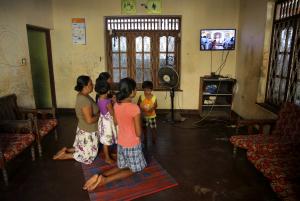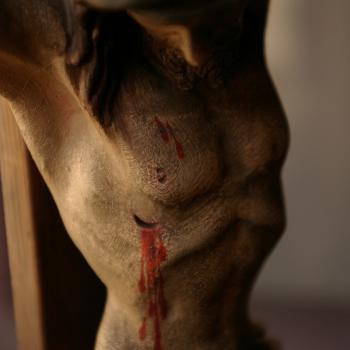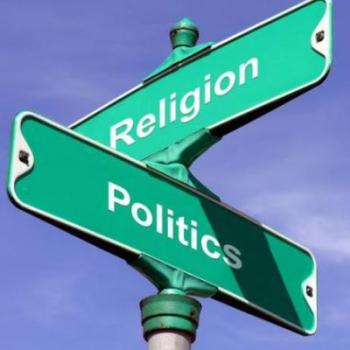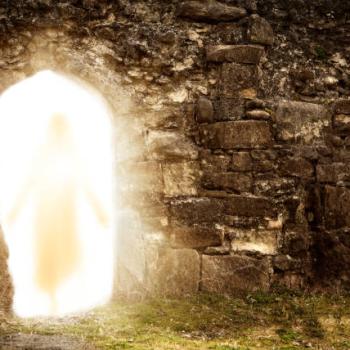
A New Zealand parish priest has an interesting take on the Church’s liturgical response to the coronavirus pandemic. Father J. P. Grayland says our clerical bias is showing. What is the place of the baptized lay faithful, Father Grayland wonders, when the Church’s public liturgy can happen without lay people present?
Grayland describes himself as “pastor of three parishes in a small rural diocese in a small, secular country.” A priest for 30 years, he has written books, including Catholics. Prayer, Belief and Diversity in a Secular Context. La Croix International published “Pandemic and the Dilemma of Catholic Liturgy,” an article he wrote recently.
Domestic church and ‘bubble’ prayers
While Catholics are isolated from each other in their homes, we have an opportunity to develop what it means to be a domestic church. In New Zealand language, Grayland calls it the “bubble” church with its “bubble” way of praying. He thinks “we may be underestimating the ability of the lay-domestic Church to pray in new and innovative ways.” That’s especially true at this time when the main new offering of the hierarchical church to the domestic church is more live-streamed TV Masses.
The coronavirus could not have picked a worse time, liturgically, to strike. The Easter Triduum holds the three most solemn and beautiful liturgies of the year. This year Catholics were unable to go to church to celebrate. I did not substitute, as many Catholics did, online services for the real ones. Instead I walked through Holy Week with Jesus and with the help of the Gospel of Mark.
On Sunday I was at my mother-in-law’s with my wife and sister-in-law. We did watch the Easter Mass on TV. We got into answering the prayers, and it started to feel less like watching a show. But it was still a far cry from being there. The biggest disappointment was when the priest gave himself Communion. Should he be partaking in the sacred feast when I and practically all of Christendom can’t?
The whole Church at Mass
Why are priests still saying Masses when they are by themselves? Why does the Vatican’s “Decree in the Time of COVID-19” encourage priests to celebrate Sunday and Holy Week liturgies even without the people? Each liturgical celebration is an act of the whole Body of Christ, head and members. The whole Church, militant, suffering, and triumphant, hierarchy and baptized faithful, is worshiping in that one place, even though that place is multiplied throughout the world. But how is the whole Christ, head and members, or the whole Church present when the baptized faithful are missing? On the other hand, it’s hard to imagine the season of Triduum without there being, somewhere, the ancient memorials of Holy Thursday, Good Friday, and Easter Vigil.
Other worshipers’ virtual experience of liturgy may be more profound than mine. That TV Mass performance I observed included a bishop, who was his own server, and a small group of musicians. I assume they were a family because they were not practicing social distancing. The reason I call it a performance, is that the singers didn’t receive Communion. Only the bishop did. The musicians were there for the benefit of the TV audience.
I think offering a TV Mass for homebound Catholics is a good thing. But that family of singers needed to receive Communion. Their full and active participation is more important than the rule that says the bishop had to give Communion to them. The ordained, even the hierarchy in the person of the bishop, are not the whole Church.
A Eucharistic fast for clerics
There’s something about being there, even in secular pursuits. Sports fans spend hundreds to be at a game when they know they could see better at home on their TVs. In a religious context, especially if it’s the Mass, physically being there is decisive. Even at the tail end of the crowd at Mass in St. Peter’s Square, you are part of the worshiping Body of Christ. That act of worship in that particular place by that particular community, like every parish Mass, is an act of the whole, universal Church.
Jesus is present when a family prays at home and when a priest prays by himself in his own domestic bubble. In neither case, though, is there the special sacramental presence of the whole Christ or the whole Church.
The Church has always discouraged, if not forbidden, private Masses, one priest celebrating alone. In the days before Vatican II priests had a way of dealing with that rule. When there was a large, multi-day gathering of priests, each one would say his own Mass but would invite one other priest to be the “congregation.” Then the two would switch roles. I would hope that actually saying one’s own Mass is less important to priests today than that. There’s nothing second-rate about being a member of a worshiping assembly.
When the assembly can’t assemble to worship, what should the priest do? One might see this as an extraordinary case that justifies priests’ saying private Masses. But I don’t see the importance of that private Mass for the Church–maybe for the priest himself. But wouldn’t it be better for that priest to join the Eucharist fast of the lay faithful? It would contribute more to building up the one Body of Christ than a proliferation of Masses.
Rules for celebrating Eucharist during a time of Covid-19
Grayland rightly criticizes the Vatican’s Covid-19 document for failing to address the role of the faithful at liturgies. Only one sentence even refers to lay Catholics, and that simply reminds clerics to inform people when video Masses will occur. I dare to address that lack by proposing here the following set of rules:
- Priests should refrain from celebrating Mass privately. While most of the People of God must fast from Eucharist, the clergy should fast too, except see below.
- Parishes and dioceses should offer video-recorded Masses each Sunday and holy day. Homebound Catholics have long appreciated the option of watching Mass on TV. This practice should continue. If each parish, or at least each diocese, offers its own recorded Masses, parishioners will better feel part of their own worshiping community.
- Recorded Masses should observe health safety rules but should include at least one lay worshiper. It is hardly possible to represent the whole Church or the whole Body of Christ without the presence of baptized faithful. These lay persons should be invited to full participation in the Mass, including the reception of Communion.
- The assembly, if more than one person, should practice appropriate social distancing or be members of one household. There may be a lector and song leader or small choir.
- In view of the danger of transmitting disease, the method of distributing Communion should depart from the normal. A family member should prepare Communion wafers for that household, placing them on a plate and covering them with a corporal. There should be separate plates and separate corporals for each household present, preferably only a few or even one. Communion wafers should remain covered until Communion time. Then a family member takes that family’s plate and gives communion to himself or herself and the other members.
More quotes from Fr. Grayland’s article:
Watching online is not participating in the Eucharist.
My presbyteral ministry is not defined by the power or need to celebrate Mass. The Sacred Liturgy belongs to the Church and I, alone, do not constitute the Church.
Liturgy is an activity of the whole community. When the community cannot gather, liturgy cannot be celebrated.
COVID-19 has revealed our deepest, unresolved liturgical distinction. [That is, between clergy and laity.] How we respond now will have some impact on how we worship in the future and on the type of Church we encounter when we emerge from our liturgical lockdown.












